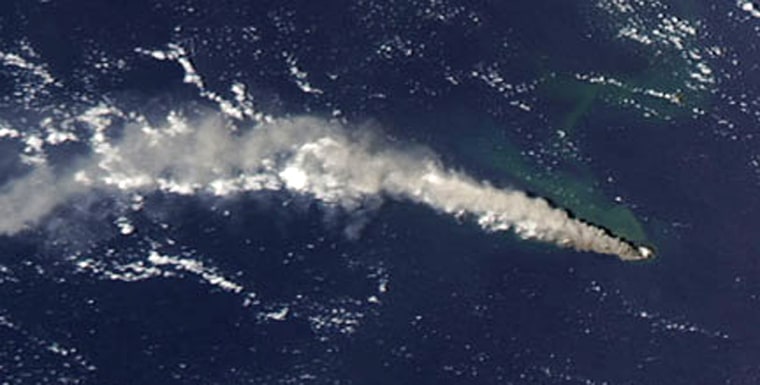The Anatahan Volcano north of Saipan has resumed rumbling in recent days, spewing steam and ash as high as 50,000 feet, the U.S. Geological Survey said Tuesday.
The latest satellite images from the Air Force Weather Agency showed a cloud of ash and steam rising 10,000 feet in the air and extending about 375 nautical miles from Anatahan island.
Thin ash and volcanic smog, or vog, also spread 815 nautical miles northwest of the island, the satellite data indicated.
An eruption Sunday afternoon was the latest since the volcano had its largest historical eruption on April 6.
That explosion expelled an estimated 50 million cubic yards of ash, grounded several commuter flights, and exacerbated asthma conditions for residents of Saipan, about 80 miles away.
The volcano also erupted on June 11.
Vog from Anatahan's activity in recent months has reached as far as the Philippines and Palau.
Though the geologists have found evidence of ancient explosive eruptions by the volcano, the first historical eruption began in May 2003. That prompted the evacuation of the island's 20 or so residents to Saipan. The island has been uninhabited since.
Officials of the Commonwealth of the Northern Marianas have banned all visits to the island except for scientific expeditions.
The CNMI government urged airplanes to pass upwind or at least 10 nautical miles downwind of the island. While the volcano is not now dangerous to most aircraft, conditions may change rapidly, the authorities said.
The eruption is at least the sixth in the past two years. The Northern Mariana Islands, roughly 3,800 miles (6,000 kilometers) west of Hawaii, have nine active volcanoes. The island chain is home to about 70,000 people.
